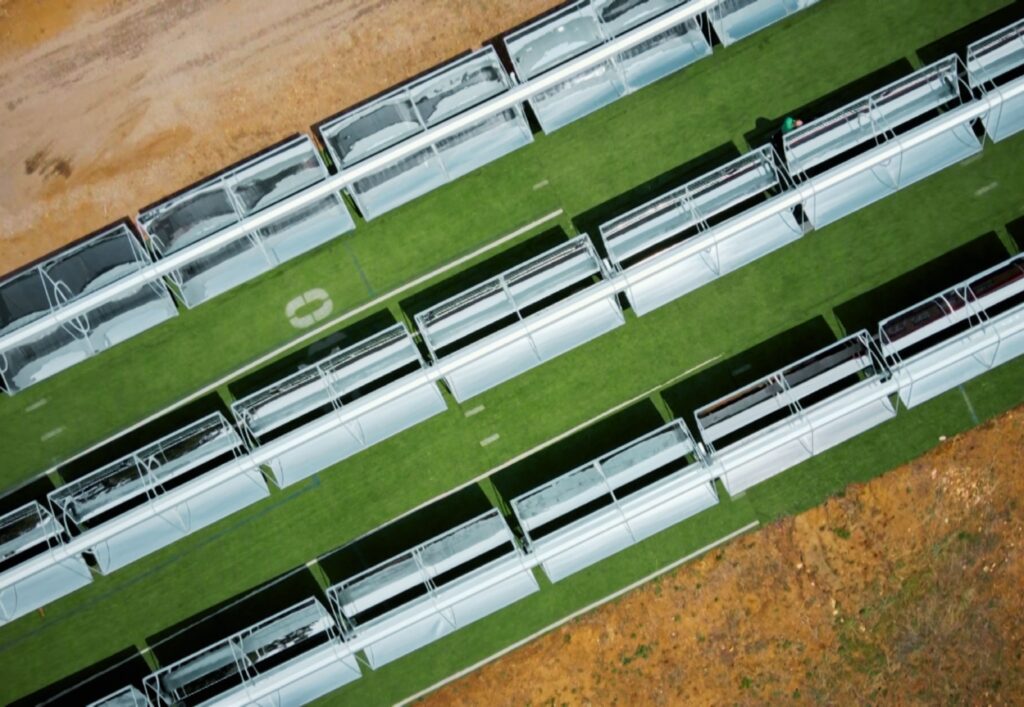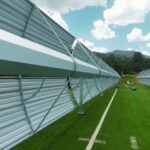
USDA REAP Grant 2024: Who Can Apply?
The United States Department of Agriculture (USDA) Rural Energy for America Program (REAP) is a game-changing opportunity for agricultural producers and rural small businesses to access substantial financial support for renewable energy projects and energy efficiency improvements.
This comprehensive guide will delve into the intricacies of the USDA REAP Grant, exploring its eligibility criteria, funding options, and the application process.
Table of Contents
The USDA REAP Grant: An Overview
The USDA REAP Grant is a federal initiative designed to increase energy independence in the United States by incentivizing the private sector to invest in renewable energy systems and energy-efficient upgrades.
Through this program, eligible agricultural producers and rural small businesses can receive grant funding and guaranteed loan financing to cover a significant portion of their project costs.
The pursuit of renewable energy solutions has gained significant momentum in recent years, with agricultural producers and rural small businesses increasingly recognizing the benefits of transitioning to clean, sustainable power sources.
At the forefront of this movement is the United States Department of Agriculture’s (USDA) Rural Energy for America Program (REAP), a game-changing initiative that provides substantial financial support to eligible entities seeking to implement renewable energy systems or enhance their energy efficiency.
Why the REAP Grant Matters
The REAP Grant is a transformative opportunity for farms, ranches, and rural businesses to access the benefits of renewable energy and energy efficiency without bearing the full financial burden. By significantly reducing the upfront investment required, the grant helps to make these projects more accessible and financially viable for a wider range of agricultural producers and small businesses.
Moreover, the program’s emphasis on clean energy and energy efficiency aligns with the growing global push to address climate change and promote sustainability. By supporting the adoption of renewable energy and energy-saving technologies, the REAP Grant contributes to the broader goal of reducing greenhouse gas emissions and fostering a more sustainable future for rural communities.
Related topics: What is C-PACE and How Can it Help in Financing Renewable Energy Projects in Colorado this 2024?
Eligibility Requirements: Who Can Apply?
To be eligible for the USDA REAP Grant, applicants must meet the following criteria:
Agricultural Producers
- Derive at least 50% of their gross income from direct agricultural operations
- May be located in rural or non-rural areas
Rural Small Businesses
- Be located in a rural development area, defined as a population of 50,000 or less
- Meet the Small Business Administration’s size standards
- Have no outstanding delinquent federal taxes, debt, judgments, or debarment
It’s important to note that both agricultural producers and rural small businesses must be financially solvent and free of any outstanding federal obligations to be considered for the grant.
Funding Options: Grants, Loans, and Combinations
The USDA REAP Grant offers several funding options to suit the needs of various projects:
Grants
- Grants can cover up to 50% of the total eligible project costs
- Minimum grant amount: $1,500
- Maximum grant amount: $1 million for renewable energy systems, $500,000 for energy efficiency improvements
Loan Guarantees
- Loan guarantees can cover up to 75% of the total eligible project costs
- Minimum loan amount: $5,000
- Maximum loan amount: $25 million
Combination of Grants and Loan Guarantees
- A combination of grants and loan guarantees can cover up to 75% of the total eligible project costs
Applicants must provide at least 25% of the project cost if applying for a loan, and at least 50% of the project cost if applying for a grant-only.
Eligible Projects: Renewable Energy and Energy Efficiency
The USDA REAP Grant can be used to finance a wide range of renewable energy and energy efficiency projects, including:
Renewable Energy Systems
- Solar energy generation
- Wind power generation
- Biomass (e.g., biodiesel, ethanol, anaerobic digesters, solid fuels)
- Geothermal for electric generation or direct use
- Hydropower (less than 30 megawatts)
- Hydrogen
- Ocean power generation (tidal, current, thermal)
Energy Efficiency Improvements
- High-efficiency HVAC systems
- Insulation upgrades
- Lighting improvements
- Cooling or refrigeration unit upgrades
- Door and window insulation
- Electric, solar, or gravity pumps for sprinkler pivots
- Switching from diesel to electric irrigation motors
- Replacement of energy-inefficient equipment
Agricultural producers can also use the grant to install energy-efficient equipment and systems for their agricultural production or processing operations.
Related topics: How SunCatch Solar Tech Helps Farming Industries Save Money while Saving the Environment
The Application Process: Navigating the Deadlines and Requirements
The USDA REAP Grant has a competitive application process, with deadlines and requirements that must be carefully followed. The current application window is open until September 30, 2024, with future rounds expected to be announced.
To apply, you’ll need to register with the System for Award Management (SAM) and obtain a Data Universal Numbering System (DUNS) number, which can take time. Additionally, you’ll be required to provide various financial and project-related documents, as well as an energy audit or assessment for energy efficiency projects.
It’s highly recommended to work closely with your state’s USDA Rural Development Energy Coordinator, who can provide valuable guidance throughout the application process and help ensure your submission is as competitive as possible.
Combining the USDA REAP Grant with Other Incentives
The USDA REAP Grant can be combined with a variety of other solar incentives and energy tax credits, further enhancing the financial benefits for eligible applicants. These include:
- Federal Solar Investment Tax Credit (ITC)
- State and local solar rebates and tax credits
- Utility-sponsored solar incentive programs
- Bonus depreciation for commercial solar installations
By stacking these incentives, agricultural producers and rural small businesses can potentially cover 80% or more of their solar project costs, making the transition to renewable energy more accessible than ever before.
Maximizing Your Chances of Securing the USDA REAP Grant
To increase your chances of successfully securing the USDA REAP Grant, consider the following strategies:
- Prepare Early: Start the application process well in advance of the deadline, as the registration and document gathering can be time-consuming.
- Leverage Local Expertise: Collaborate closely with your state’s USDA Rural Development Energy Coordinator, who can provide guidance and support throughout the process.
- Prioritize Project Readiness: Ensure your project has completed the necessary energy audits, environmental reviews, and other technical requirements before submitting your application.
- Highlight Your Competitive Edge: Emphasize the unique aspects of your project, such as its environmental benefits, energy savings, or contribution to rural economic development.
- Stay Informed: Monitor the USDA’s website and announcements for any updates or changes to the REAP program, as well as deadlines for upcoming application rounds.
By understanding the USDA REAP Grant’s eligibility criteria, funding options, and application process, agricultural producers and rural small businesses can unlock substantial savings and propel their renewable energy and energy efficiency initiatives forward. With the right preparation and strategic approach, you can position your project for success and contribute to a more sustainable, energy-independent future.
Related topics: Exploring Business Tax Breaks and Incentives for Solar Thermal Energy in 2024
Optimizing Savings with the REAP Grant
By taking advantage of the REAP Grant, agricultural producers and rural small businesses can unlock significant savings and position themselves for long-term sustainability. When combined with other available incentives, such as the federal Investment Tax Credit (ITC) and state or local rebates, the REAP Grant can cover up to 80% or more of the total project costs.
For example, a $100,000 solar PV installation on a rural business property could require an investment of just $30,000 or less, thanks to the REAP Grant’s 50% coverage and the ITC’s 30% credit. This level of financial support can make renewable energy and energy efficiency projects far more accessible and achievable for agricultural producers and rural small businesses.
Staying Ahead of the Curve
As the REAP Grant program continues to evolve, it’s crucial for agricultural producers and rural small businesses to stay informed and proactive in their pursuit of this valuable funding.
With the recent infusion of additional funds through the Inflation Reduction Act, the program’s reach and impact are expected to grow, making it an even more compelling option for those seeking to invest in renewable energy and energy efficiency.
By working with experienced solar and energy efficiency experts, agricultural producers and rural small businesses can navigate the REAP Grant application process with confidence, ensuring they maximize their chances of securing this transformative funding.
With the right support and strategic planning, these entities can unlock the power of renewable energy, reduce their operating costs, and contribute to a more sustainable future for their communities.
Latest Posts
- Reverse Osmosis vs Thermal Desalination: Which is Better for Water Desalination?
 Reverse Osmosis vs Thermal Desalination: Which is Better for Water Desalination? When it comes to the leading technologies in the field of desalination, comparing reverse osmosis vs thermal desalination highlights two distinct approaches to obtaining fresh water from seawater, each with its own strengths and application. Water scarcity is a global challenge that continues to… Read more: Reverse Osmosis vs Thermal Desalination: Which is Better for Water Desalination?
Reverse Osmosis vs Thermal Desalination: Which is Better for Water Desalination? When it comes to the leading technologies in the field of desalination, comparing reverse osmosis vs thermal desalination highlights two distinct approaches to obtaining fresh water from seawater, each with its own strengths and application. Water scarcity is a global challenge that continues to… Read more: Reverse Osmosis vs Thermal Desalination: Which is Better for Water Desalination? - Understanding Thermal Desalination: Process, Benefits, and Solar-Powered Innovations
 Understanding Thermal Desalination: Process, Benefits, and Solar-Powered Innovations Through the remarkable process of thermal desalination, we can be one step closer to a future where communities, farms, and industries alike can enjoy a steady flow of clean, fresh water. With about 70% of the Earth’s surface covered by water, it might seem like there’s an… Read more: Understanding Thermal Desalination: Process, Benefits, and Solar-Powered Innovations
Understanding Thermal Desalination: Process, Benefits, and Solar-Powered Innovations Through the remarkable process of thermal desalination, we can be one step closer to a future where communities, farms, and industries alike can enjoy a steady flow of clean, fresh water. With about 70% of the Earth’s surface covered by water, it might seem like there’s an… Read more: Understanding Thermal Desalination: Process, Benefits, and Solar-Powered Innovations - DISCOVER THE FUTURE OF SOLAR THERMAL SYSTEMS FOR YOUR HOME AND BUSINESS
 What are solar thermal systems? In today’s world of rising energy costs and growing environmental concerns, the search for sustainable energy solutions has never been more urgent. Solar thermal systems offer a promising avenue to reduce our reliance on fossil fuels and embrace a cleaner, greener future. Imagine a world where your home or business… Read more: DISCOVER THE FUTURE OF SOLAR THERMAL SYSTEMS FOR YOUR HOME AND BUSINESS
What are solar thermal systems? In today’s world of rising energy costs and growing environmental concerns, the search for sustainable energy solutions has never been more urgent. Solar thermal systems offer a promising avenue to reduce our reliance on fossil fuels and embrace a cleaner, greener future. Imagine a world where your home or business… Read more: DISCOVER THE FUTURE OF SOLAR THERMAL SYSTEMS FOR YOUR HOME AND BUSINESS - NET ZERO SOLAR THERMAL SOLUTIONS: What you need to eliminate your farming hot water bill!
 What is Net Zero Solar Thermal Solutions Are you looking for ways to eliminate your farming hot water bill or significantly reduce your energy consumption? Let me introduce you to a Net Zero Solar Thermal Solution that is revolutionizing the way we harness energy for farms and beyond. We are thrilled to introduce our groundbreaking… Read more: NET ZERO SOLAR THERMAL SOLUTIONS: What you need to eliminate your farming hot water bill!
What is Net Zero Solar Thermal Solutions Are you looking for ways to eliminate your farming hot water bill or significantly reduce your energy consumption? Let me introduce you to a Net Zero Solar Thermal Solution that is revolutionizing the way we harness energy for farms and beyond. We are thrilled to introduce our groundbreaking… Read more: NET ZERO SOLAR THERMAL SOLUTIONS: What you need to eliminate your farming hot water bill!